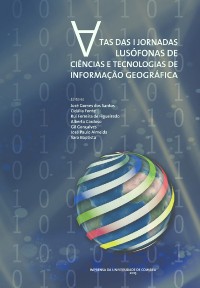Please use this identifier to cite or link to this item:
https://hdl.handle.net/10316.2/37062| Title: | Organismos genéticamente modificados: a necessidade da correta delimitação e divulgação do espaço destinado ao plantio como mecanismo de proteção ambiental | Other Titles: | Organisms genetically modified: the need for correct delineation and dissemination of space for the planting and environmental protection mechanism | Authors: | Nogueira, Luana P. | Keywords: | Genetically modified organisms;;Genetic admixture;;Biodiversity;;Correct delineation of space;;Inspire.;Organismos geneticamente modificados;;Biodiversidade;;Biodiversidade;;Correta delimitação do espaço;;Inspire. | Issue Date: | 2015 | Publisher: | Imprensa da Universidade de Coimbra | Journal: | http://hdl.handle.net/10316.2/37053 | Abstract: | The focus of this study is whether or not the co- existence of natural or organic crops ,
they understand themselves as non-GMOs by manipulation of man with crops genetically
modified organisms being hotly debated the issue of genetic migration . It is known that
the close proximity between the species and the possibility of genetic pollination can
generate migration across cultures and this effect would be detrimental. In this sense,
the present study aims to analyze the possibilities of a correct delineation of areas for
planting of genetically modified organisms and non-genetically modified organisms, so
that we can establish a safe distance between them, which allows the cultivation of both
species without harming biodiversity and therefore food security. Immediately thereafter ,
meant to emphasize the necessity of a system of monitoring and disclosure to the public
knowledge of the areas in which the cultivation of modified foods, more clearly make use
of the Inspire Directive is performed. O cerne do presente trabalho é a possibilidade ou não de co-existência de culturas naturais ou biológicas, entendam-se estas como organismos não modificados geneticamente por manipulação do homem com culturas de organismos geneticamente modificados, sendo muito debatida a questão da migração genética. Sabe-se que a proximidade entre as espécies e a possibilidade de polinização podem gerar a migração genética entre as culturas e este efeito seria nefasto. Nesse sentido, o presente estudo pretende analisar as possibilidades de uma correta delimitação das áreas de plantio de organismos geneticamente modificados e de organismos não geneticamente modificados, de forma que se possa estabelecer uma distância segura entre elas, a qual permita o cultivo de ambas as espécies sem prejudicar a biodiversidade e conseqüentemente a segurança alimentar. Ato contínuo, pretende enfatizar-se a necessidade de um sistema de monitorização e divulgação para o conhecimento público das áreas em que é realizado o cultivo dos alimentos modificados, mais claramente fazer uso da Diretiva Inspire. |
URI: | https://hdl.handle.net/10316.2/37062 | ISBN: | 978-989-26-0983-6 (PDF) | DOI: | 10.14195/978-989-26-0983-6_9 | Rights: | open access |
| Appears in Collections: | Atas das I Jornadas Lusófonas de Ciências e Tecnologias de Informação Geográfica |
Files in This Item:
| File | Description | Size | Format | |
|---|---|---|---|---|
| cap_tulo_9._organismos_gen_ticamente_modificados.pdf | 966 kB | Adobe PDF |  |
Items in DSpace are protected by copyright, with all rights reserved, unless otherwise indicated.
